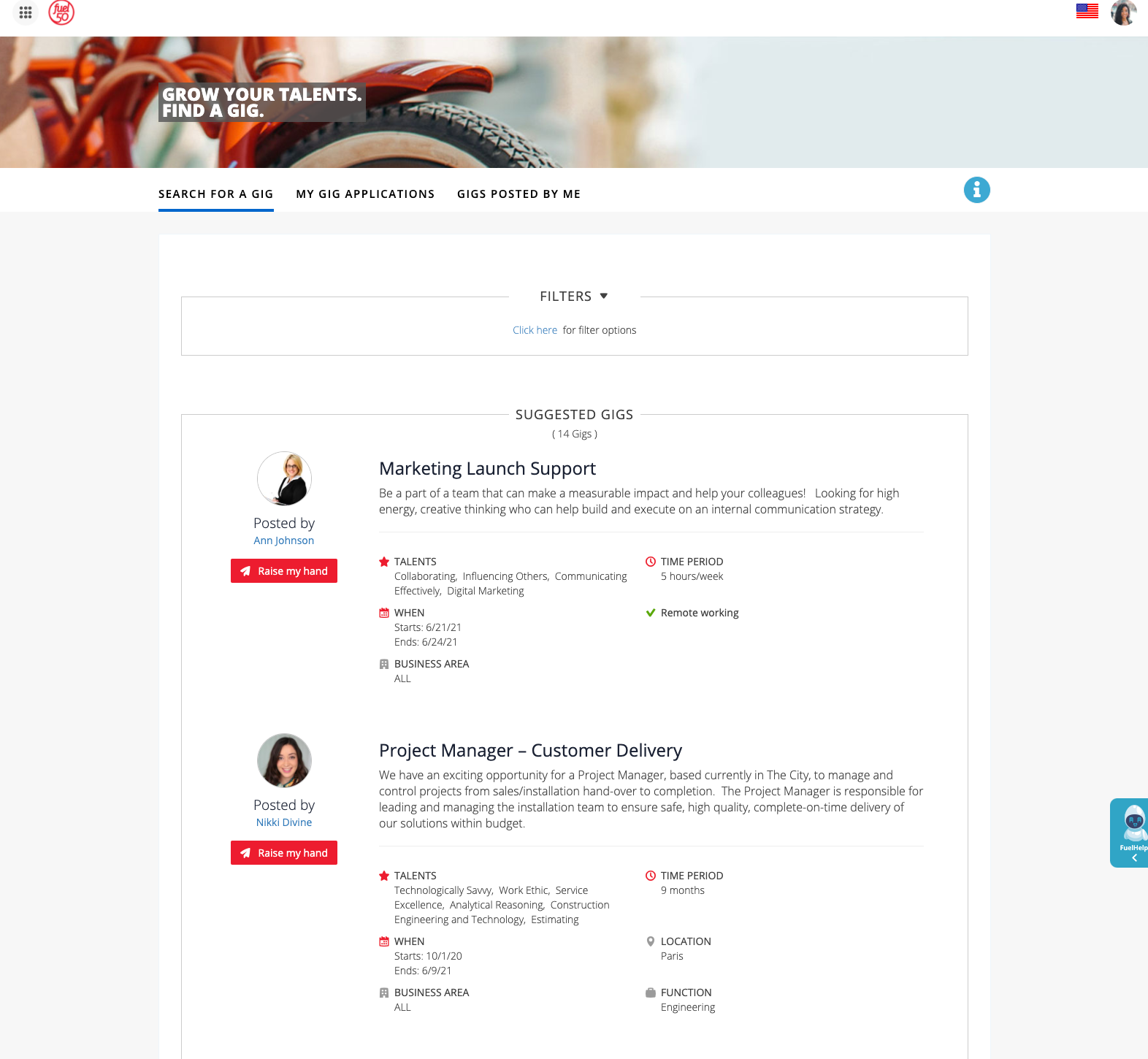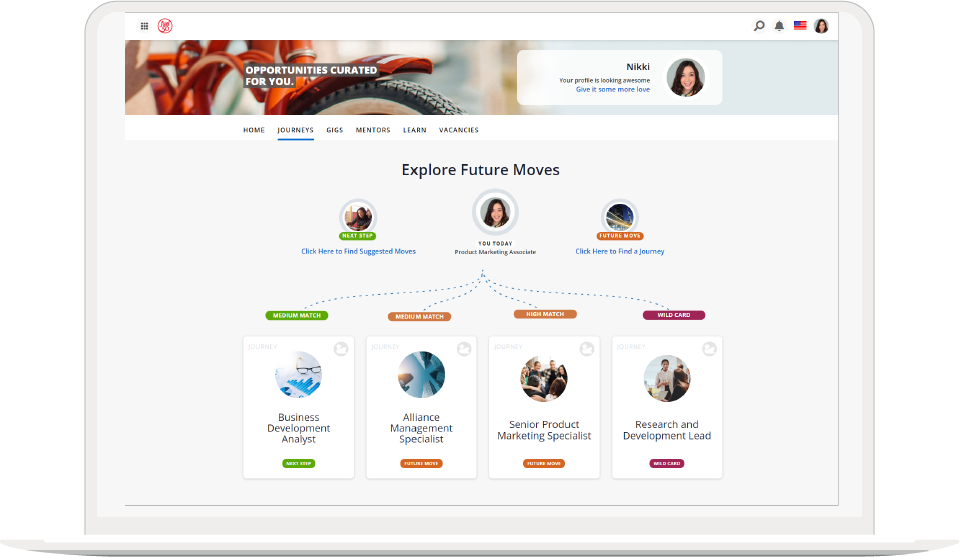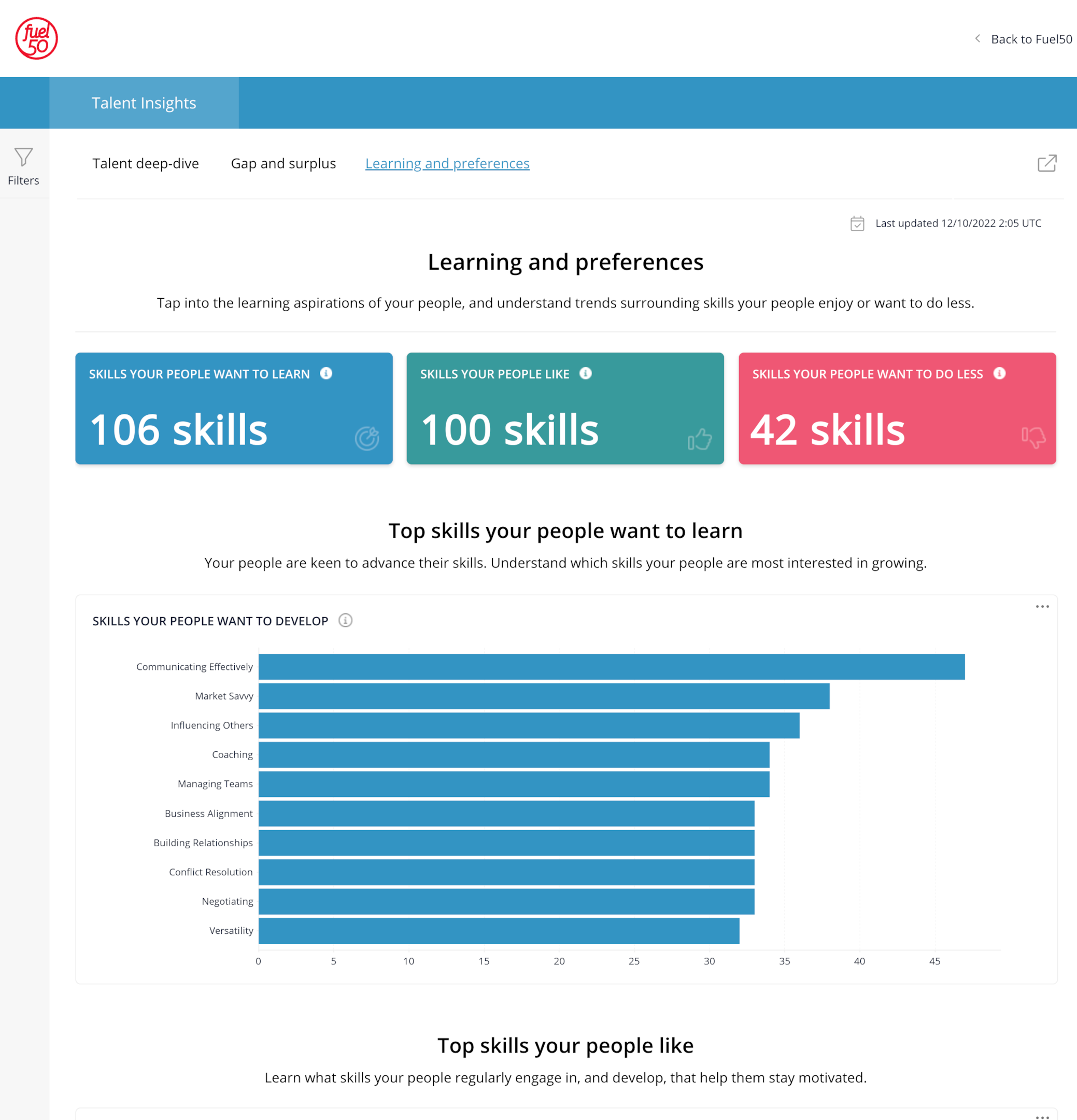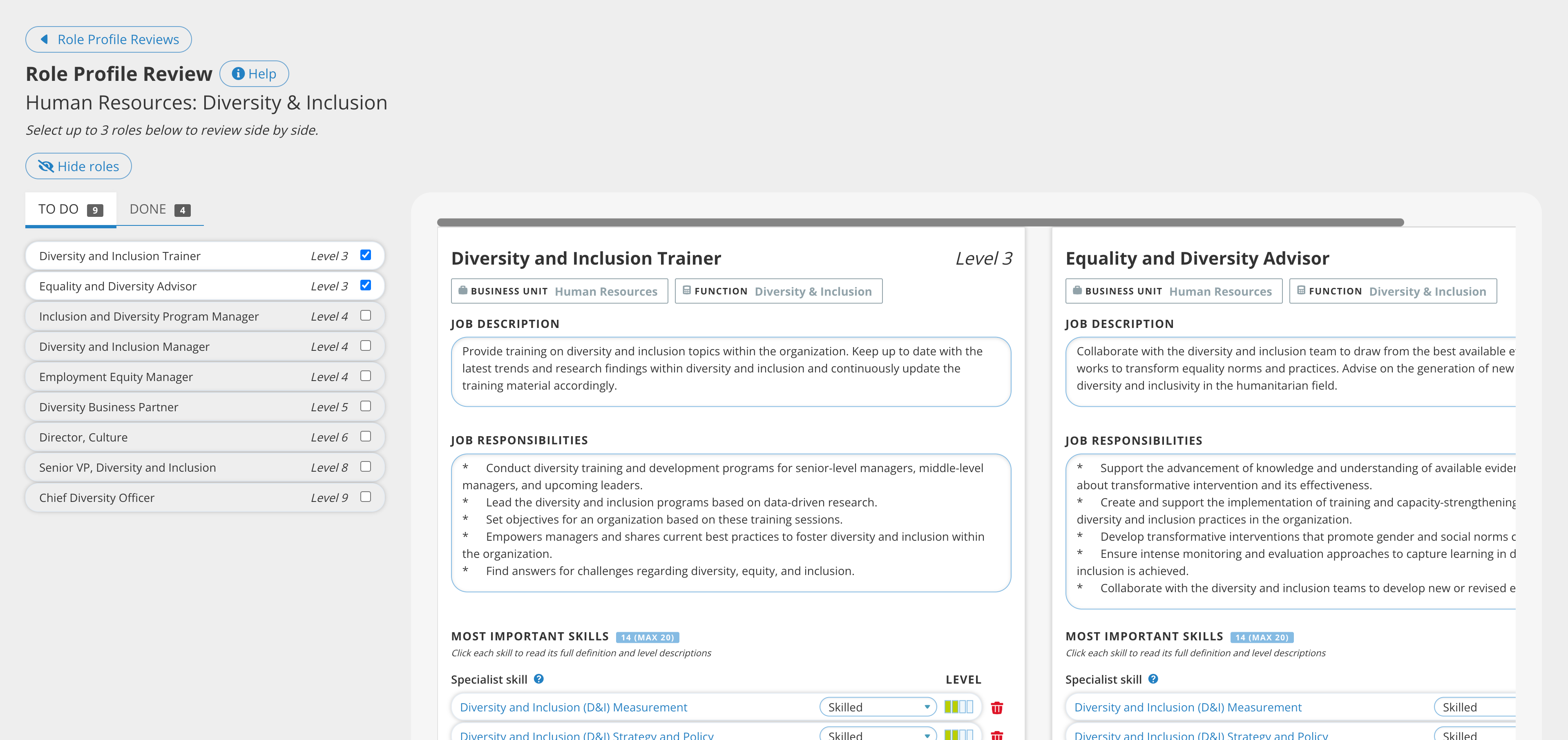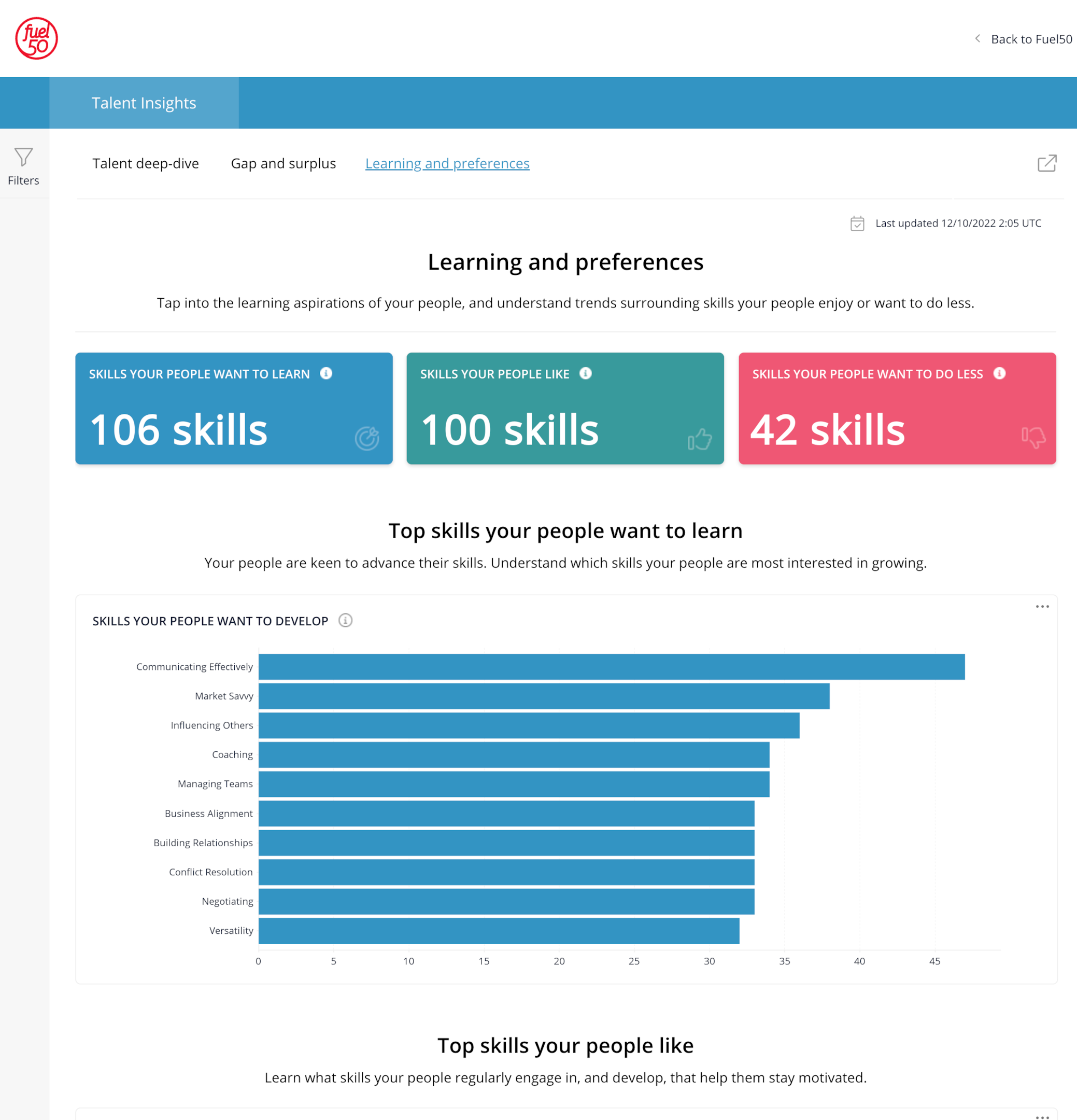For the last 5 years, I’ve been deeply immersed in building a career pathing software solution as Chief Technology Officer of a start-up called Fuel50. Career pathing, you ask?
Yes, that is actually a thing! Simply put, it’s the name given to a software system which is able to show people viable career paths in an organization from any start role to any destination.
In fact, it’s quite a “thing” these days! Testament to this fact is that our start-up that hit the blocks a few years ago is now providing our award-winning career pathing solution to many Fortune 500 firms across the globe, some of which are household names.
Note: Struggling to engage or retain your employees due to lack of internal career development programs? Fuel50’s career pathing tool allows you to create personalized career journeys, identify hidden talent, and align individual growth with organizational goals. Request a demo now.
The burning career planning problem and why do businesses need career pathing?
Imagine you’re an employee at a medium to large-sized company, meaning anything from say 500 up to 500,000 employees.
You’re sitting at your desk and thinking “Hmm, I’m really not that fulfilled in my current role, I actually always wanted to do website design but somehow I’ve landed in marketing doing brochures and flyers”, a ball and chain spring to mind.
At this point you’ve got two choices — you either pull up Indeed or some other job board on your phone and browse opportunities in other firms, or elect to talk to your manager about a potential internal career move.
And you’re not alone. Thousands of employees around the globe are quitting because organizations aren’t investingenough in their careers.
So, why do people leave their jobs?
Why do people look outside for opportunities rather than within? We’ve all been there — they’re afraid of looking like they are complaining, and even if they do ask, they don’t have any confidence that their manager will really know or understand.
To be fair, how can one person possibly know about every role within a company and what is needed to get ‘in’ anyway?
Your manager is only likely to know about a handful of roles around their sphere of influence, combined with the fact they don’t really want to lose you anyway (who enjoys recruiting, really?) so perhaps they aren’t really all that motivated to help you look elsewhere.
This lack of visibility to opportunities within a firm is demoralizing to staff, and an internal job board simply does not solve this problem.
People need some context, they need to know what’s out there that would suit them personally, and they need to know how to close whatever skills gaps they might have to give themselves a reasonable chance of getting there.
This is where a true career pathing solution can help retain an employee that would otherwise have jumped ship.
What is career pathing then?
Career pathing is a structured approach to professional development that outlines potential career paths within an organization. It’s a strategic process that helps employees visualize their career journey and understand the steps needed to achieve their career goals.
A well-designed career pathing program provides clear career paths for employees, enabling them to see various opportunities for advancement and professional growth within the company. This approach not only benefits individual employees but also contributes to overall employee engagement and retention.
Career pathing goes beyond simply creating a career ladder. It encompasses a holistic view of an employee’s professional life, taking into account their current skills, desired career objectives, and long-term career goals. By mapping out potential career paths, employees gain clarity on the skills they need to develop and the experiences they should seek to progress in their chosen direction.
For job seekers and existing employees alike, career pathing offers a roadmap for professional development. It helps individuals create a career path that aligns with their aspirations and the organization’s needs. This alignment is crucial for both personal satisfaction and organizational success.
Effective career pathing programs often include:
- Skill development opportunities: Identifying and providing training programs to help employees acquire new skills necessary for their desired roles.
- Mentorship and coaching: Pairing employees with experienced professionals who can guide them on their career journey.
- Job rotation and cross-functional experiences: Offering opportunities to gain diverse experiences across different departments or roles.
- Regular career discussions: Encouraging ongoing dialogues between employees and their direct managers about career goals and progress.
- Personalized career pathways: Recognizing that each employee’s career journey is unique and providing flexibility in career progression.
By implementing a comprehensive career pathing program, organizations can create a culture of continuous learning and growth. This not only helps in retaining top talent but also in developing a skilled workforce ready to meet future challenges.
For employees, career pathing provides a sense of direction and purpose in their professional life. It helps them understand how their current role fits into the larger organizational structure and what steps they need to take to advance their careers. This clarity can significantly boost job satisfaction and motivation.
What’s career pathing software and how does it favor effective career pathing program?
Career pathing software is a digital tool designed to help organizations and employees visualize and plan career progression within a company. It uses data and algorithms to map out potential career paths, identify skill gaps, and suggest development opportunities.
Before you think career pathing is a miracle solution to solve all your organization’s problems, you need to know that it works well when these two fundamentals are in place:
- A comprehensive role framework: This includes a complete set of roles within the company, each with overlapping skills mapped and graded by skill level. This framework serves as the backbone of the career pathing system, providing a clear picture of how different roles relate to each other in terms of skills and responsibilities.
- An intelligent matching algorithm: This is the engine that powers the career pathing software. It takes the information about skills within roles (and any other relevant role information) and can show an employee how to get from any starting role to any destination role within the organization.
Additionally, there’s a often-overlooked but crucial third element:
- Speed and efficiency: The system needs to process this information and provide results in a matter of seconds.
When these elements come together, career pathing software can significantly enhance an organization’s professional development and employee retention strategies.
How to create your organization’s own career pathing and how to make it work?
The short answer is that you’ll need a computer algorithm. An algorithm is simply computer code which applies business logic (and often mathematical equations) to figure something out, such as “making a recommendation towards some kind of decision”.
Let’s assume that your company has either purchased a career framework or you’ve built your own, and you’ve got roles with overlapping skills and skill levels to make connections between one role and the next possible. Your next task is to design an algorithm that will be able to tell any employee:
- How to get from any start role in the company to any destination role (even if these roles are in totally different business areas);
- What skills gaps users need to close to get to the destination role; and
- What intermediate roles users should go through to get to their desired role
There are many parameters that such an algorithm would have to consider, for example:
- How much of a skills overlap between two roles should mean that a jump is actually possible or not?
- How much should skills gaps between two roles actually matter (missing skills in one role that are present in another)?
- Should there be restrictions on movements between roles of different levels?
- How much influence does each level have as a predictor of whether a jump between roles is doable?
- How do skills overlaps value compared to other factors such as two roles being in the same department, function, or some other demographic?
- What other factors might help inform the algorithm about the feasibility of a jump between two roles being likely in the real world?
- How much weighting do we need to give each of the factors mentioned above?
Let’s dive deeper into the key considerations when designing this algorithm:
Skills overlap and gaps
The algorithm must be nuanced in how it interprets skills. A 70% skills match between roles might be sufficient in some cases, while in others, a single critical skill gap could make a transition unfeasible. Your system should be able to differentiate between nice-to-have skills and deal-breakers.
Role relationships
Beyond just skills, your algorithm needs to understand the implicit relationships between roles. For instance, a move from Marketing Manager to Product Manager might make sense even if the skills overlap isn’t high, due to the strategic nature of both roles.
Intermediate steps
A good career pathing system doesn’t just show the end goal; it maps out the journey. Your algorithm should be able to suggest logical stepping stones between roles, even if they’re in different departments.
Weighting factors
Consider how you’ll weight different factors. Should current performance ratings play a role? What about an employee’s expressed interests? These weightings can significantly impact the paths suggested.
However, even the most sophisticated algorithm is only as good as the data it’s fed. This is where the human element becomes crucial.
HR leaders need to ensure that the role framework underpinning the system is comprehensive and up-to-date. This means regular reviews and updates, especially in industries where new roles emerge frequently.
Moreover, career pathing isn’t just about moving up; it’s about moving forward. Your system should be flexible enough to accommodate both traditional career ladders and more modern career lattices. This means allowing for lateral moves, cross-functional experiences, and even temporary role changes for skill development.
Lastly, implementation is where many career pathing initiatives falter. It’s not enough to have a great system; you need buy-in from across the organization.
This means:
- Training managers to have meaningful career conversations with their team members, using the insights provided by your system.
- Empowering employees to take ownership of their career development, giving them the tools to explore potential paths and understand the skills they need to develop.
- Aligning career pathing with other HR initiatives like succession planning, learning and development programs, and performance management.
- Regularly gathering feedback and iterating on your system. What works in theory might need adjusting in practice.
Remember, career pathing is not a set-it-and-forget-it solution. It’s a living, breathing part of your organizational ecosystem. As your business evolves, so too should your career pathing system.
Note: Struggling to engage or retain your employees due to lack of internal career development programs? Fuel50’s career pathing tool allows you to create personalized career journeys, identify hidden talent, and align individual growth with organizational goals. Request a demo now.
Why most (pseudo) career pathing platforms fail
Most software solutions in the market get stuck right there — they don’t have competency models with overlapping skills. In fact, at the time of writing this I can tell you that none of them do! We’ve done our competitive research — they simply don’t have the data structures to make true career pathing work in real life.
For instance, if a software product claims to offer career pathing, but their skills are not graded by levels, then you know something’s wrong.
Most software solutions in the market get stuck right there — they don’t have competency models with overlapping skills.
Without skill levels it’s literally impossible to determine the difference between, say, a “Senior Developer” role that requires advanced software development skills versus a “Junior Developer” role that only requires a basic level of knowledge.
Ideally, a computer algorithm could show a path wherein a Junior Developer can become a Senior, but if both roles just have “Software Development” as a requirement (and I happen to know this first-hand) then both roles will match me equally.
For obvious reasons, this isn’t really useful as it would give the false impression that a Junior Developer would match a Senior Developer role without having to close any skills gaps! Otherwise known as pseudo career pathing.
For recommendations to be sensible, and for a pathway to be shown that makes intuitive sense, this is a fundamental “Gotcha!” that must be right or the whole concept falls apart.
This is why pseudo career pathing systems that claim to do “crowd-sourced competency frameworks” don’t work (hit me up if you want some names).
If a system simply imports skills from LinkedIn or from simple dropdown lists that users have chosen, and these skills are not graded into levels, then true career pathing does not exist. Period.
Long story short? The devil is in the details when you are picking a real career pathing solution!
Note: Struggling to engage or retain your employees due to lack of internal career development programs? Fuel50’s career pathing tool allows you to create personalized career journeys, identify hidden talent, and align individual growth with organizational goals. Request a demo now.
Looking for a tool to automate this for you? Here’s how does Fuel50’s career pathing tool can help
At Fuel50, we didn’t set out to build just another HR tech solution. We’re on a mission to change how organizations approach career development and talent management.
We’ve seen firsthand how companies struggle with outdated, manual approaches to career planning. The costs—both financial and in terms of lost opportunities—can be staggering.
That’s why we’ve poured our expertise and passion into developing a career pathing tool that not only streamlines the process but transforms it into a powerful driver of employee engagement and organizational success.
Our career pathing solution tackles some of the most pressing challenges facing modern businesses:
- The disconnect between employee aspirations and organizational needs
- The struggle to identify and nurture hidden talent within the company
- The challenge of keeping skills relevant in a rapidly evolving job market
- The need for personalized career development that goes beyond one-size-fits-all approaches
Here’s how Fuel50 addresses these issues and more, providing a comprehensive career pathing and planning solution that’s changing the game for organizations worldwide:
Empower your employees’ career growth and internal mobility with a talent marketplace
Fuel50’s AI-powered Talent Marketplace goes beyond simple job matching. It creates a dynamic environment where employees can explore various growth opportunities — from full-time roles to gig work and mentorship programs.
For enterprises, this means increased workforce agility, improved retention of top talent, and the ability to quickly mobilize skills where they’re needed most.
Imagine being able to fill critical project needs in days rather than months, all while boosting employee satisfaction and development.
Our talent marketplace offers:
- Hyper-personalization: We build a unique “career DNA” for each employee, ensuring that every interaction and opportunity is tailored to their specific skills, interests, and aspirations. This level of personalization goes far beyond traditional career pathing tools, creating a truly engaging experience for employees.
- Advanced AI career journeys: Our platform doesn’t just show linear career paths. It uses sophisticated algorithms to map out multiple potential career journeys, including non-traditional moves and cross-functional opportunities. This approach opens up new possibilities for employees and helps organizations maximize their internal talent pool.
- Integrated AI architecture: We’ve reinvented the architecture ecosystem, dynamically updating our customer frameworks as their business changes. Fuel50 looks at your existing skill, user, and role data to power the marketplace and provide your employees with a clear next step to future growth.
Build a future-proof workforce framework using our skills architecture
By automating the design of roles, bands, functions, and levels, our Skills Architecture solution allows organizations to adapt quickly to market changes.
This means you can restructure your workforce in real-time, aligning skills with emerging business needs. It’s like having a flexible, living organizational chart that evolves with your business strategy.
Create a common language for skills with our skills ontology tool
Fuel50’s Skills Ontology is more than just a skills database. It’s a comprehensive, AI-updated library of capabilities, specialist skills, and technologies that creates a unified language for talent across your organization.
For enterprises, this means breaking down silos between departments, enabling more accurate workforce planning, and identifying skill gaps before they become critical issues. It’s the foundation for truly data-driven talent decisions.
Make data-driven talent decisions with Fuel50 Insights
Fuel50 Insights transforms raw data into actionable intelligence. It provides a panoramic view of your talent landscape, allowing HR leaders to make informed decisions about skill development, succession planning, and workforce strategy.
For enterprises, this means the ability to predict future skill needs, identify high-potential employees, and optimize learning and development investments. It’s like having a crystal ball for your workforce planning.
Note: Struggling to engage or retain your employees due to lack of internal career development programs? Fuel50’s career pathing tool allows you to create personalized career journeys, identify hidden talent, and align individual growth with organizational goals. Request a demo now.




